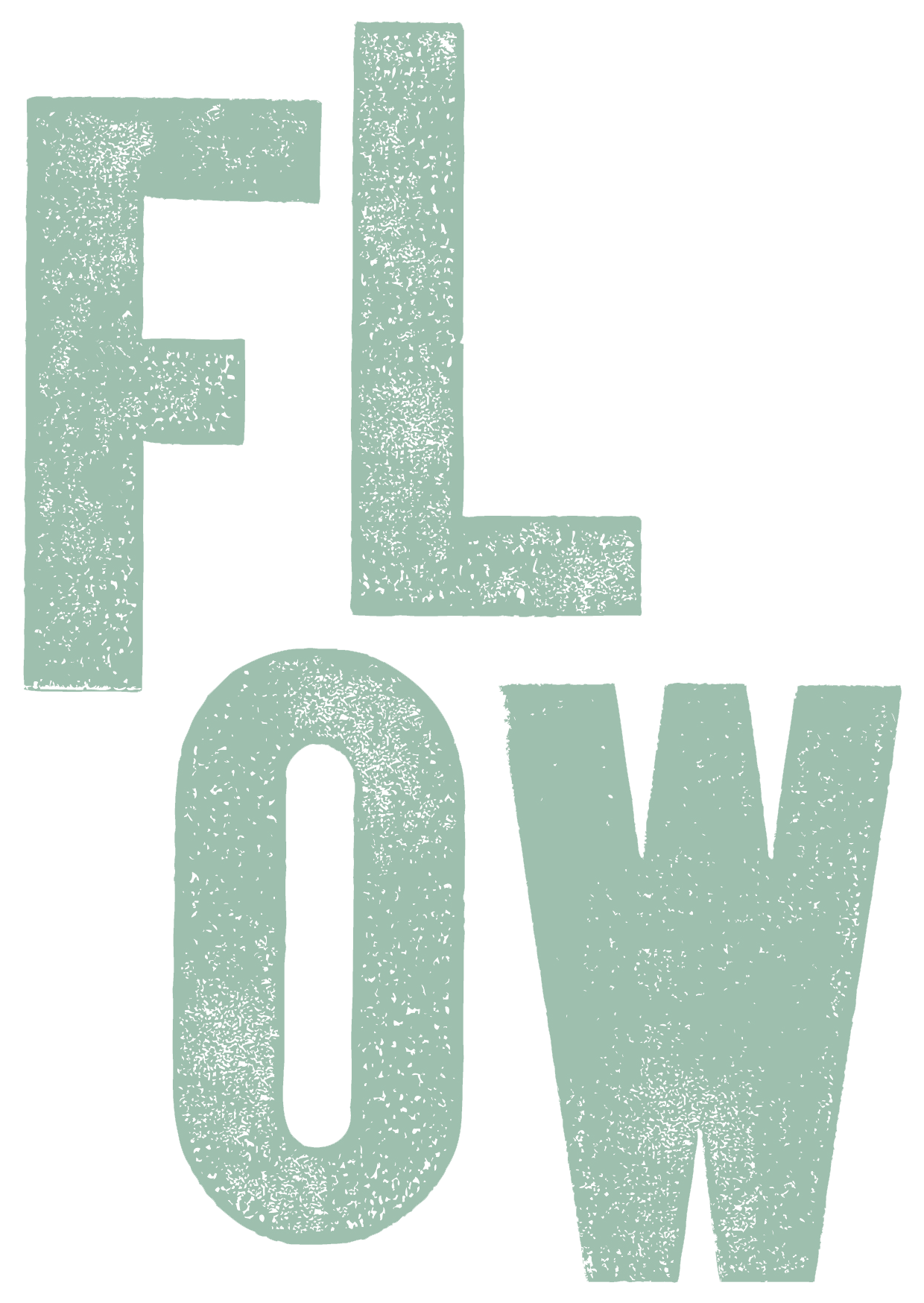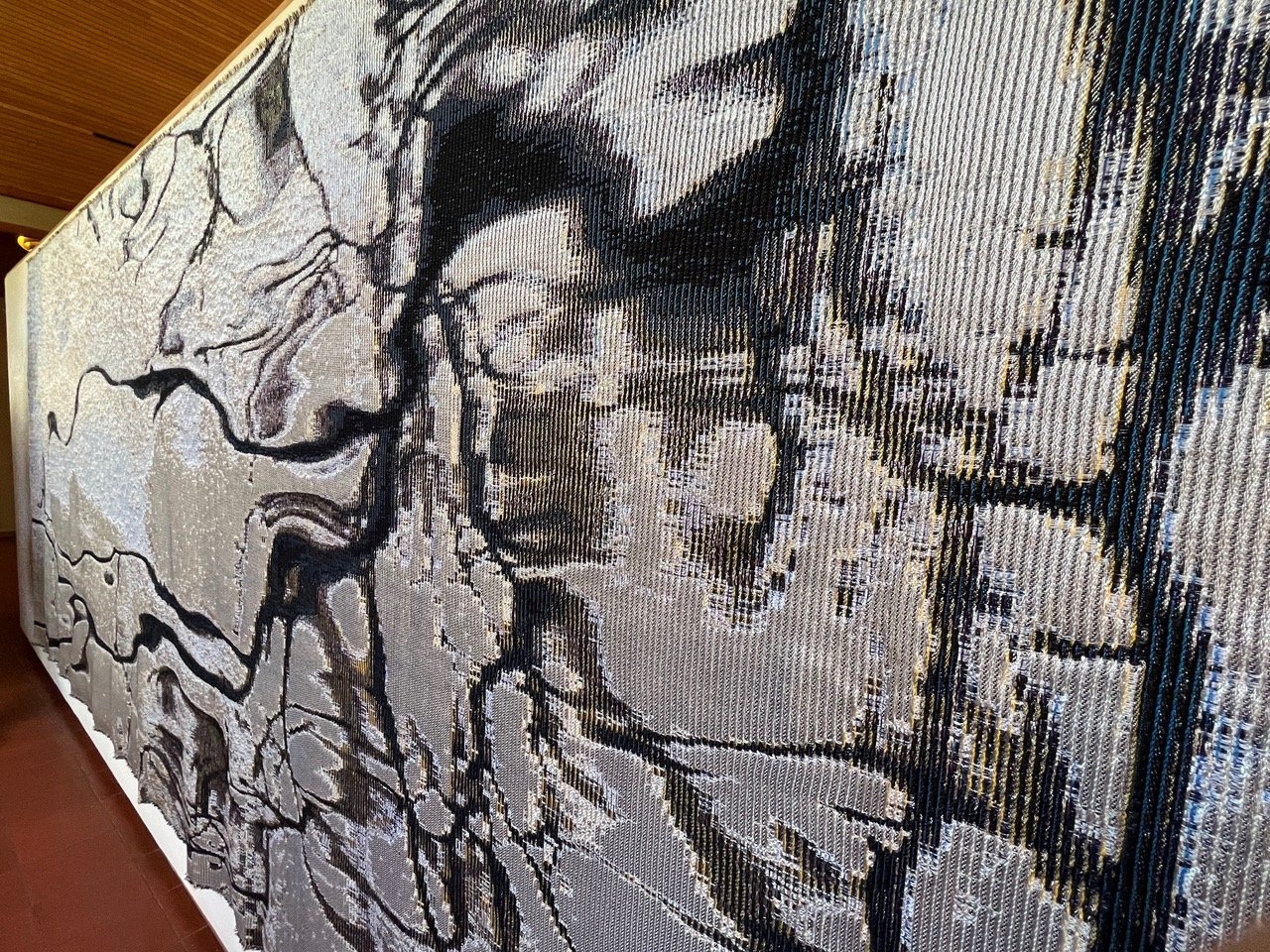Textile Artists of Bergen
September 2022
Yvonna Demczynska tells of her visit to the studios of Norwegian textile artists, whilst on a trip to Bergen, Norway
Kari Dyrdal’s Sevres I at Kode, Bergen (2019), photo by Andreas Dyrdal
In addition to seeing the Material Statements solo exhibition by Nina Malterud, I had the opportunity to visit a number of textile artists during my trip, namely Åse Ljones, Kari Drydal and Kristina Daas.
All three of the artists are based at the old Sardine Factory, which now comprises of some wonderful artists’ studios. Some even have a sea view, as is the case of Åse Ljones’ studio.
Åse Ljones in her studio at the old Sardine Factory
I first met Åse in 2004 when I was curating an exhibition of Norwegian Craft at Flow Gallery, which later toured to Oriel Myrddin Gallery in Carmarthen and The Scottish Gallery in Edinburgh. We also showed her work later at Collect in 2008.
The narrative in Åse’s embroideries is strongly informed by her rural upbringing in Norway. Living on a farm where there was no road access, she walked 5km to school every day and observed nature and light during different times of day. Sometimes her father would collect her by boat, and they would ride the boat along the fjords. The sewing and embroidering tradition in her family have had a lasting impression, particularly the work of her mother and aunts. Some of her embroidery stitches are inspired by the embroidery used on collars and cuffs on the Norwegian National Costume shirts, whilst some refer to her nostalgic memories spent on the farm.
She speaks in one of her interviews on the importance of women’s work, and the symbolic meaning of textiles:
I’ve always been engaged with the ordinary, everyday objects. The things we each have close relationships with, and I use that as a theme in my art.
The everyday objects are connected to women. To their social and cultural position, and to their work in society. Textile work is often associated with women’s work. We surround ourselves with textiles from our birth until death. We use textiles as useful and necessary items to decorate our bodies and homes, and even our animals and homesteads, tents. The primary role of textiles has always been protection.
It has been a pleasure to re-connect with Åse, and to show her work at Flow Gallery again.
Kari Dyrdal’s Sevres II at Kode, Bergen (2019), photo by Andreas Dyrdal
Kari Dyrdal’s studio is next to Åse Ljones’ space. Kari also showed in the touring exhibition in 2005 at Flow Gallery, and so it was a pleasure to make contact again and see the progression of her practice.
Like Åse, she was introduced to embroidering by seeing the work of women in her family, and especially her grandmother. This led to her interest in textiles, utilising both traditional woven techniques at the loom and more recently digital weaving. She studied at Bergen Art Academy and later taught there. Her work is on a much larger scale than I remember from the exhibition at Flow Gallery, and are now held in many museums and significant collections.
Detail of piece by Kari Dyrdal, photo by Andreas Dyrdal
Dyrdal’s large-scale pieces deal with memory and repetition. She takes photographs of diverse spaces – a ceramic factory at Sevres, images of nature – and digitally transforms the photographs into patterns. These are then digitally transcribed into her tapestries – woven on large digital looms in the Textile Museum in the Netherlands.
The below photograph of her work was commissioned for a special part of the security police offices. The piece, which is more than 10 metres long, hangs between representation and abstraction. She writes how:
I work in series and with site specific commissions, where theme and concept are researched through construction, visually and materially in the loom. My starting point is my images, my photos, which are transformed to woven surfaces, where patterns and repeats, color and fibers are essential. The challenge, then, is to give content to the technique and textural quality to the surface, to create work with a strong tactile presence that also has an intellectual dimension.
Kari Dyrdal’s Pond at the National Emergency Center outside Oslo (2020), photo by Andreas Dyrdal
In fact, whilst Kari Dyrdal was Professor at the Bergen Art Academy, she taught the artist who I visited next: Katrina D. Aas.
Kristina D. Aas also uses digital looms and specialises mostly in Jacquard weave, but with the occasional addition of embroidery. Jacquard weave enables her to create different layers, giving an almost sculptural quality to her large-scale pieces. Each of her works plays upon perception; from some stand-points a piece may appear flat, whilst other angles reveal depth and dimension.
Kristina D. Aas, Bark (left) and in her studio
Kristina also collaborates with other artists in large-scale installations, as well as designing for significant companies in the design textile industry, such as Kvadrat.
Seeing artists “at home” in their studio always adds another layer to understanding their work, and appreciating how their pieces come to life. It was particularly illuminating to visit these three female textile artists, some of whom I have had contact with for many years, in their studio context. We look forward to bringing more of their work to Flow Gallery in the future.
Kristina D. Aas, Two Coils











